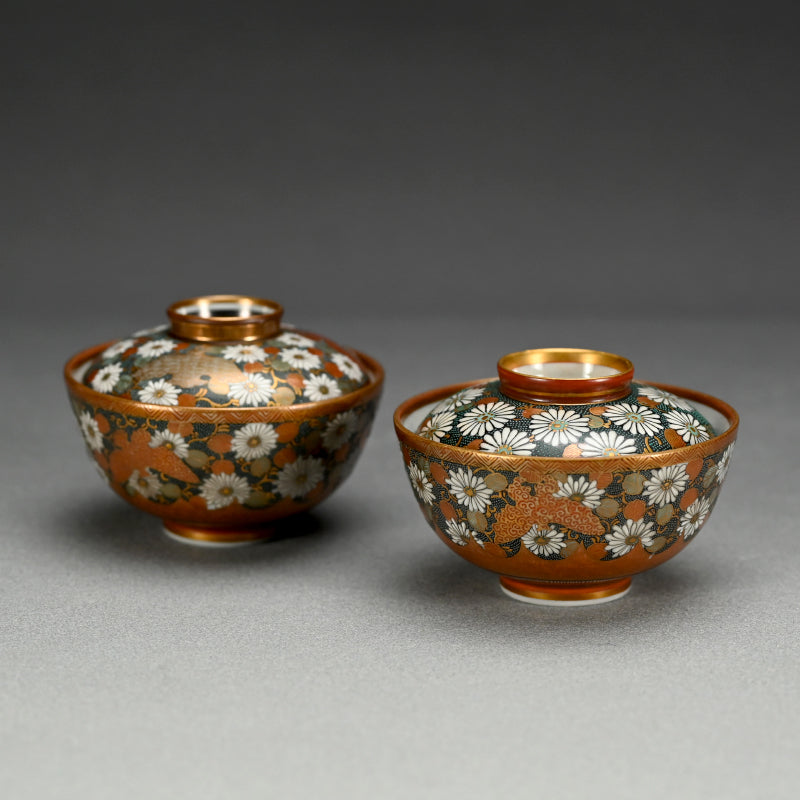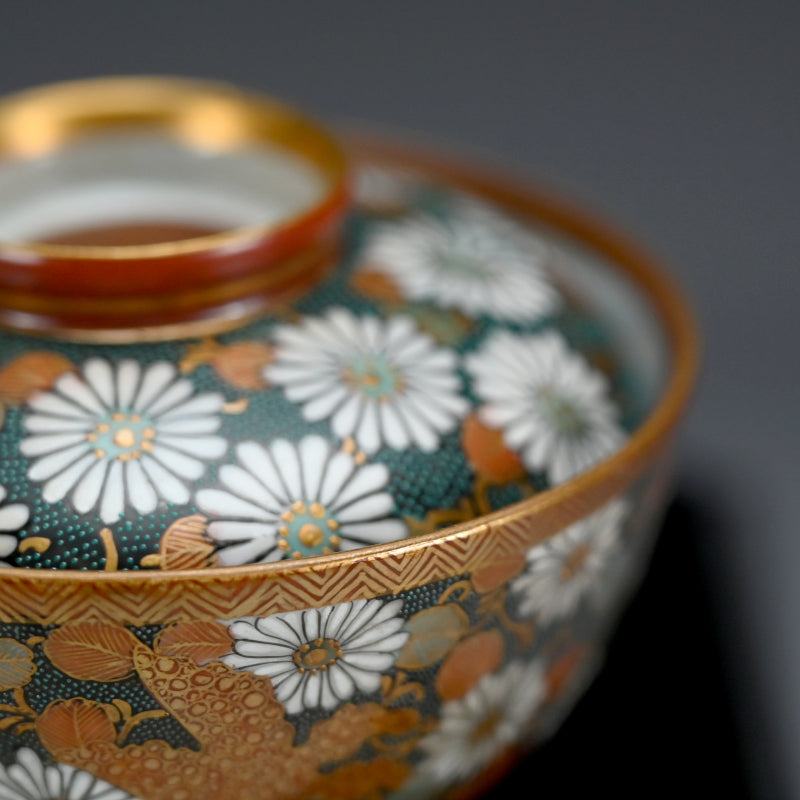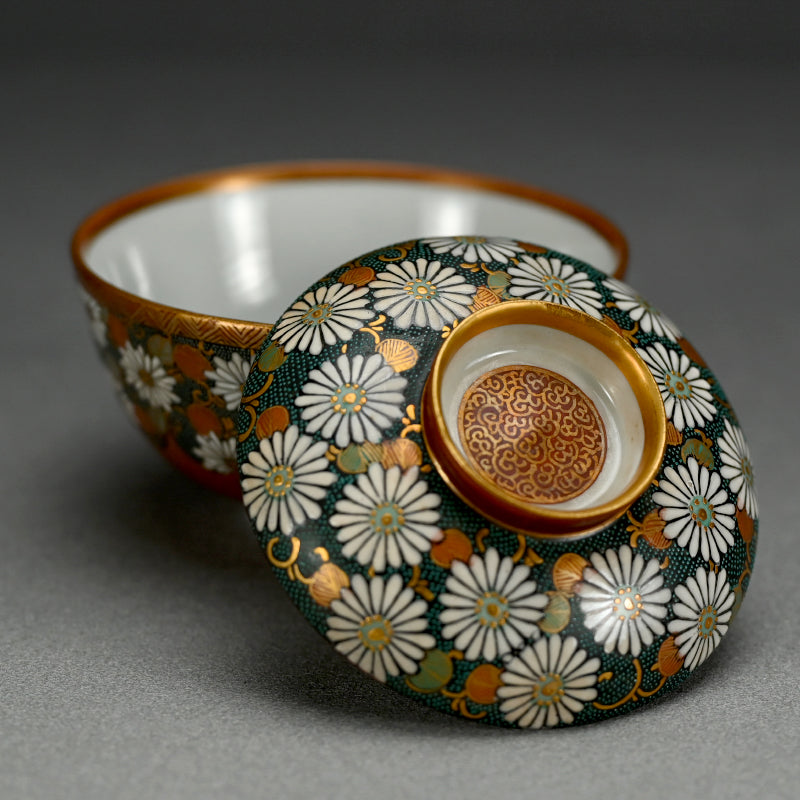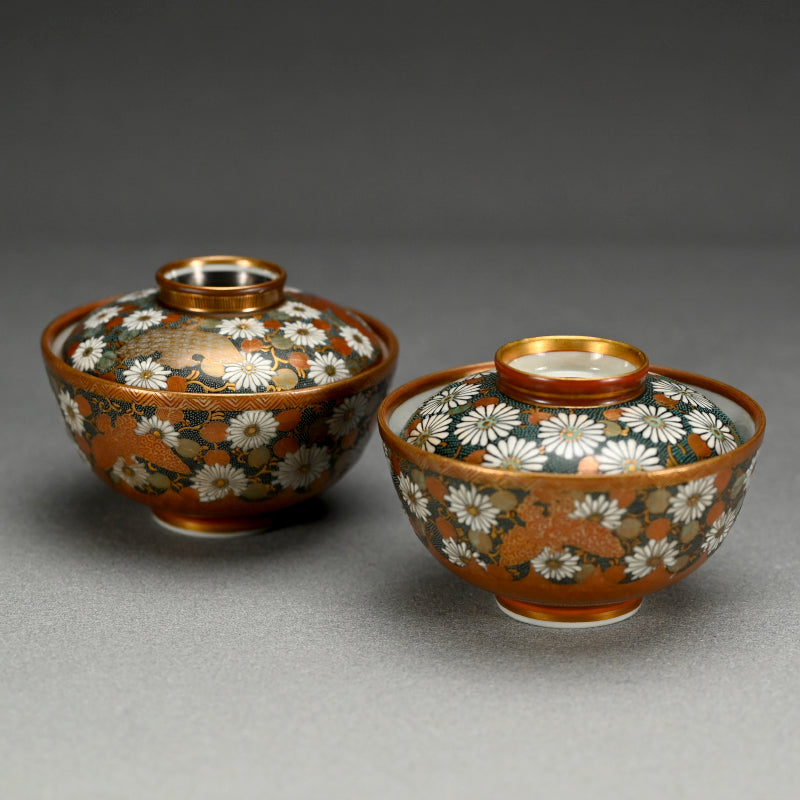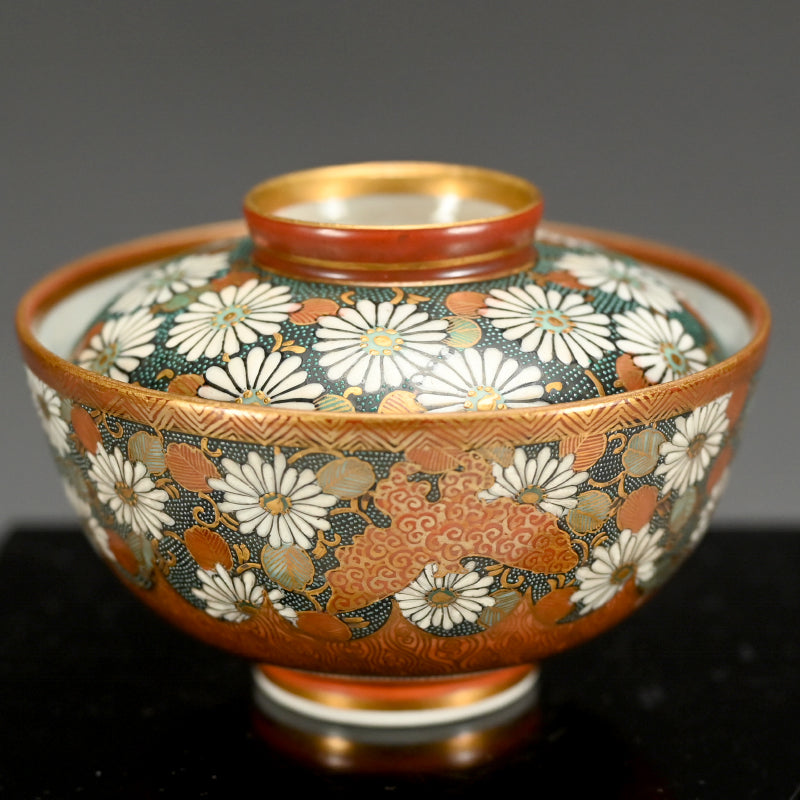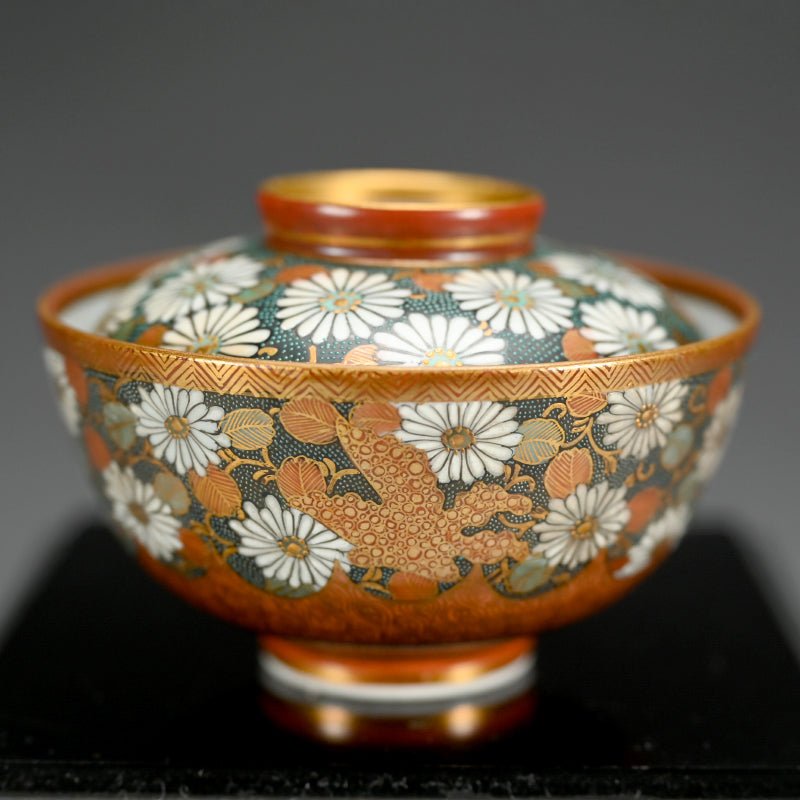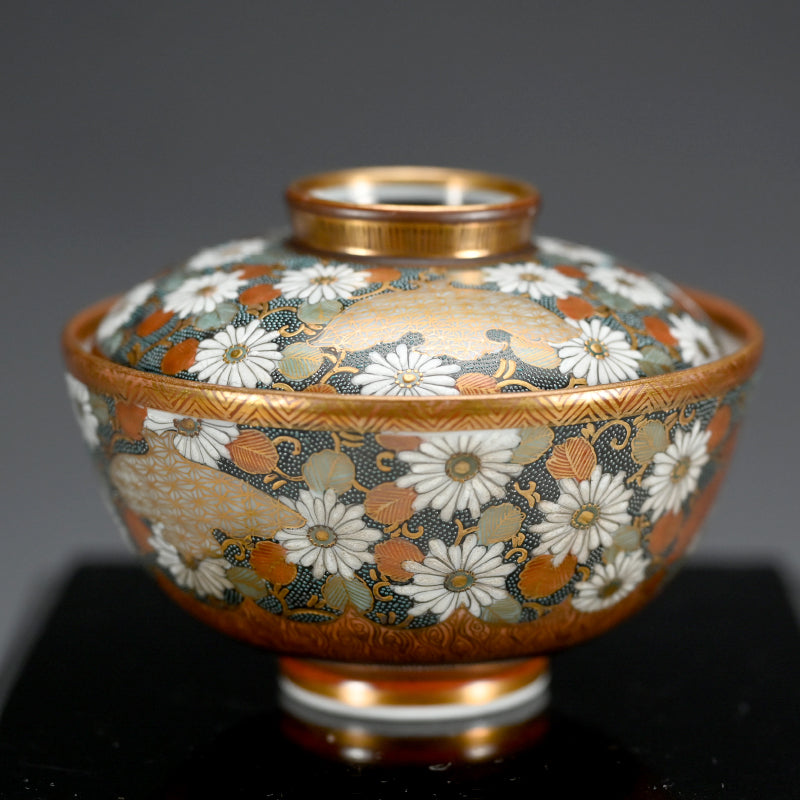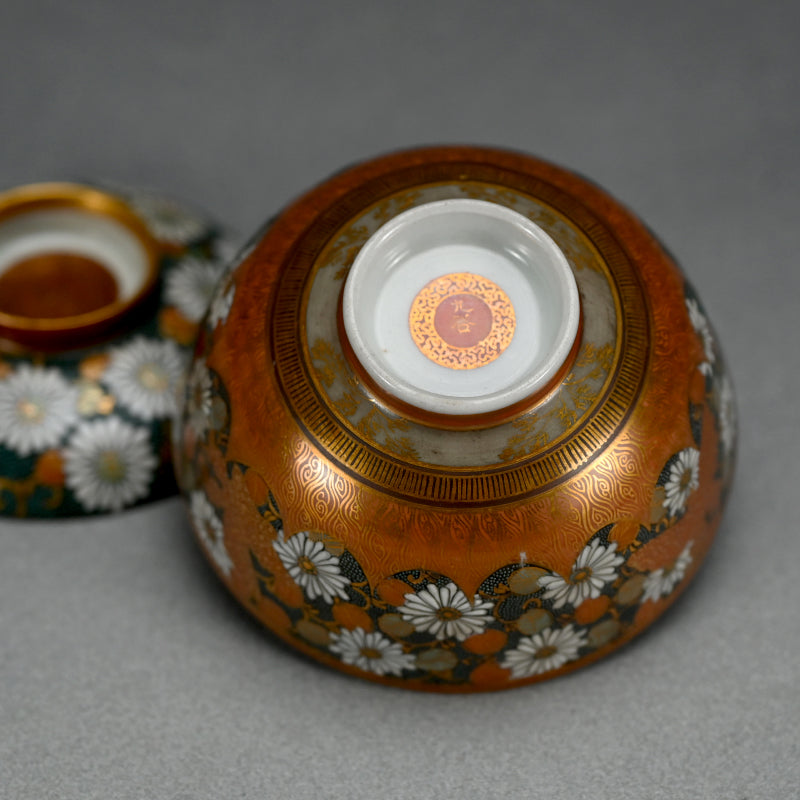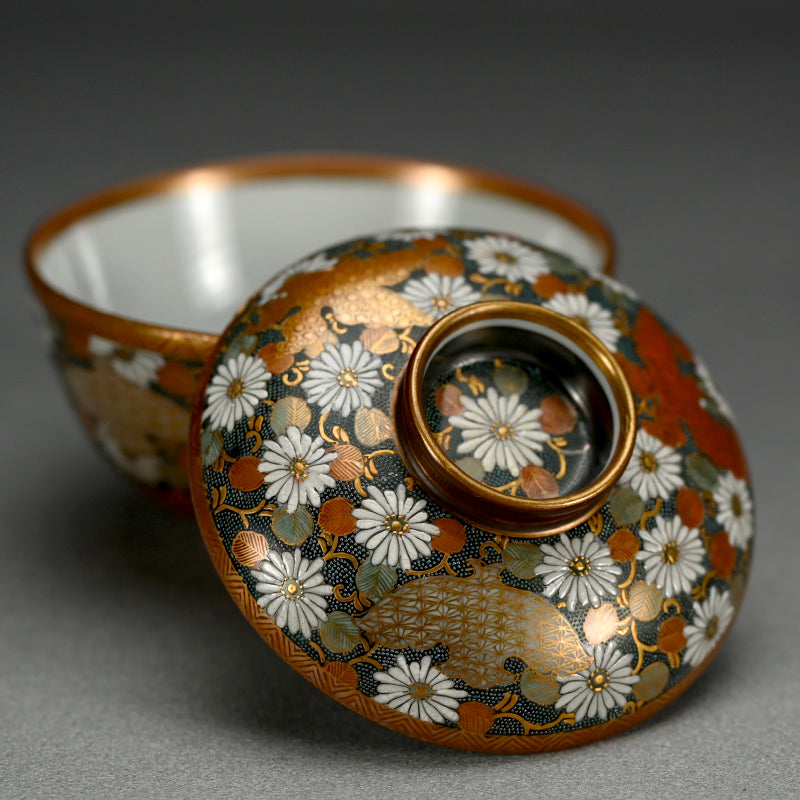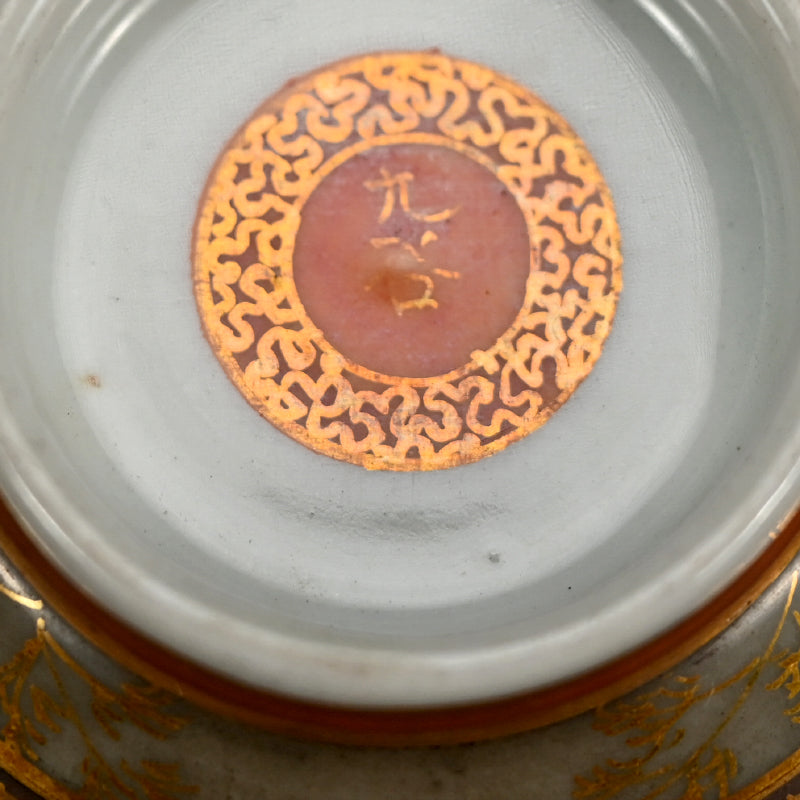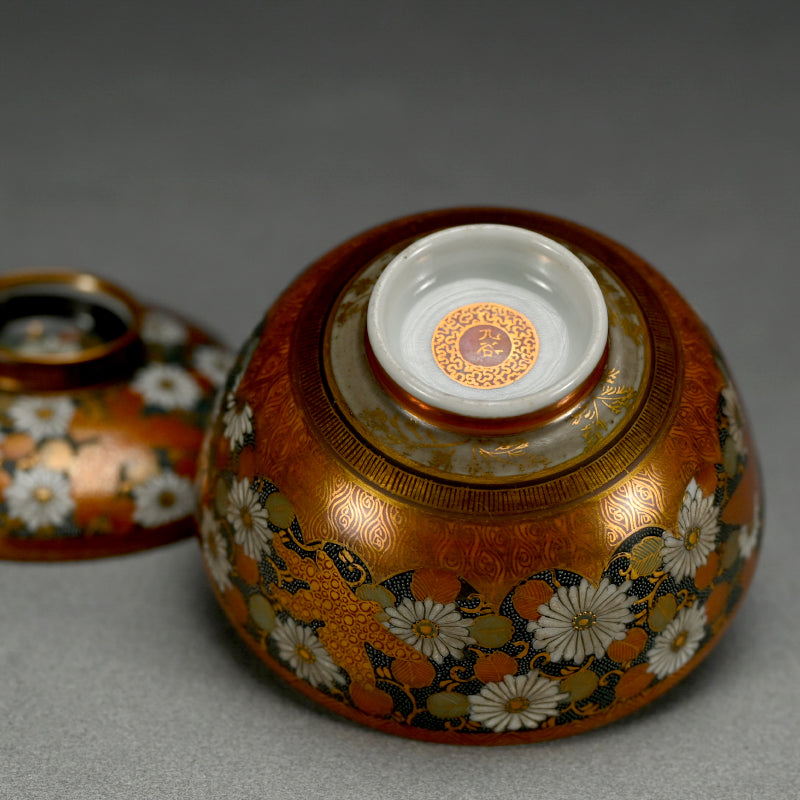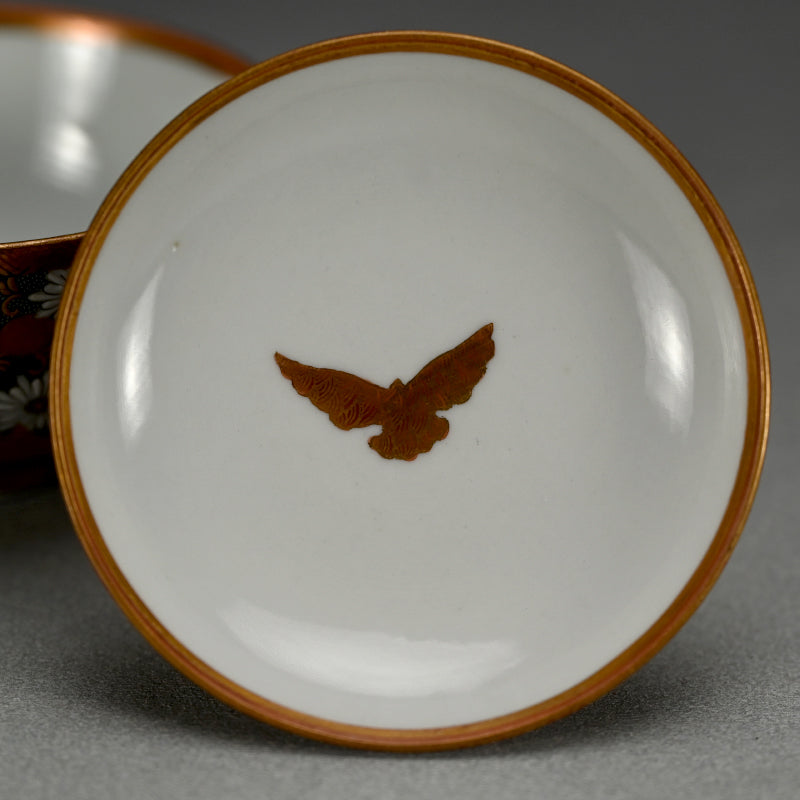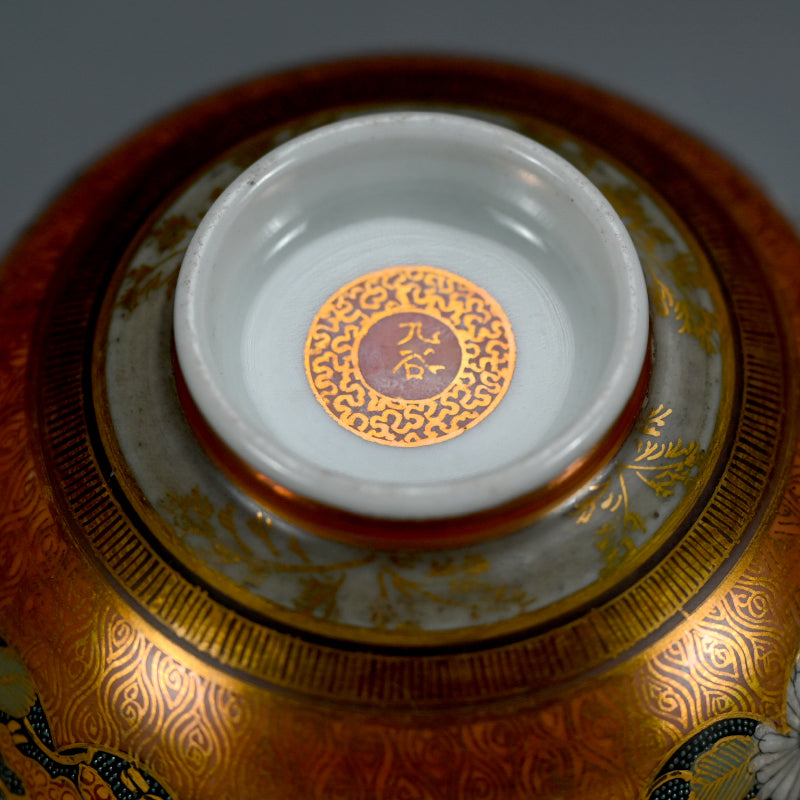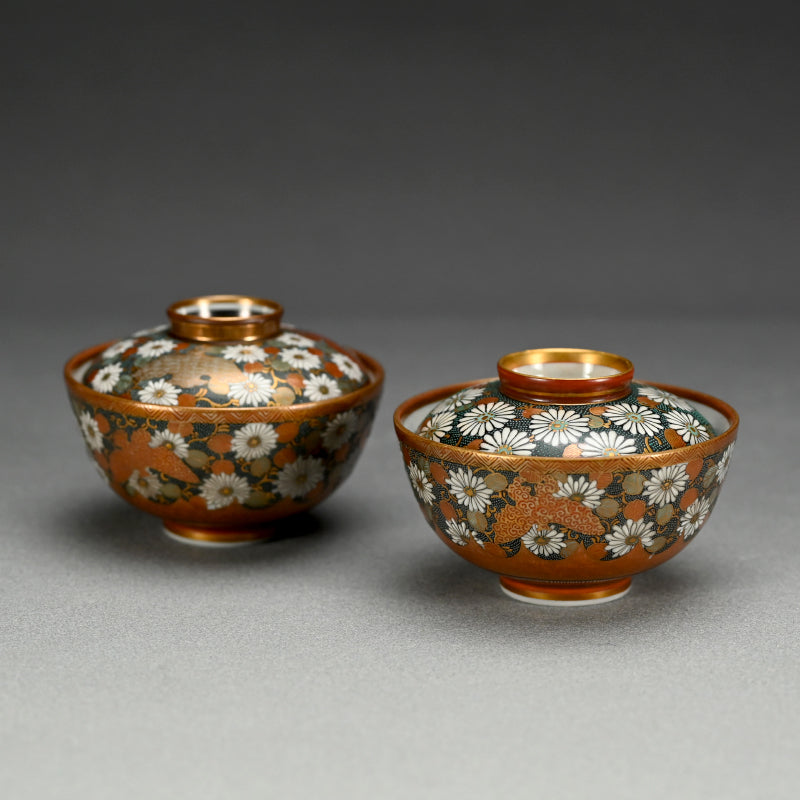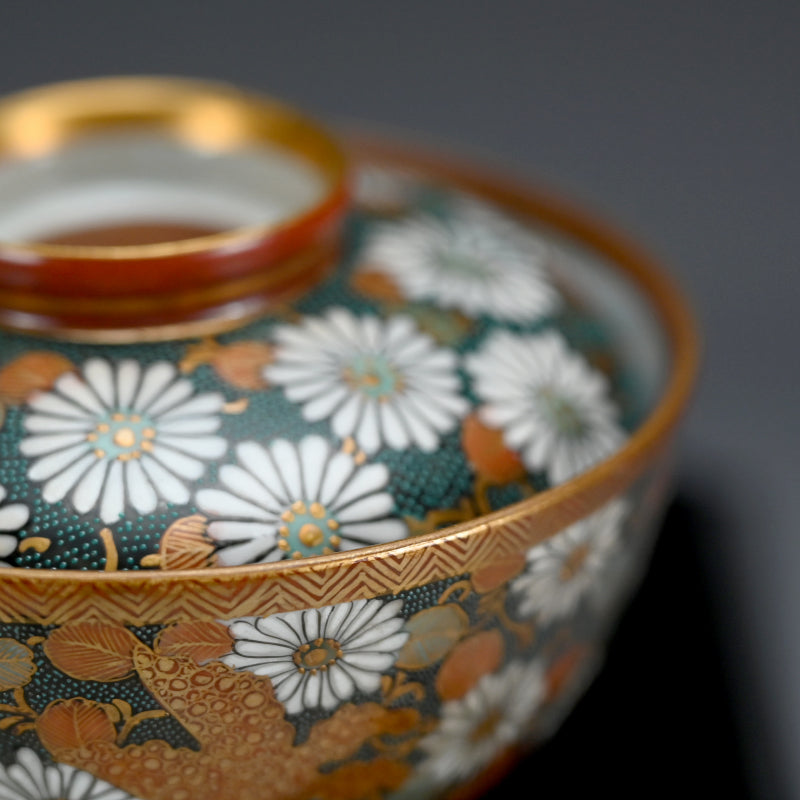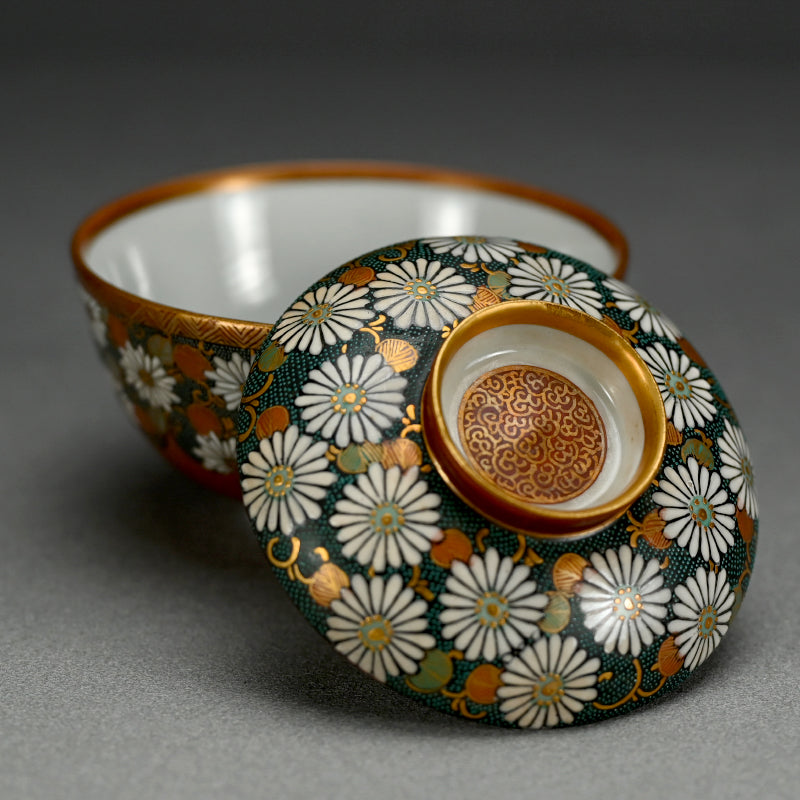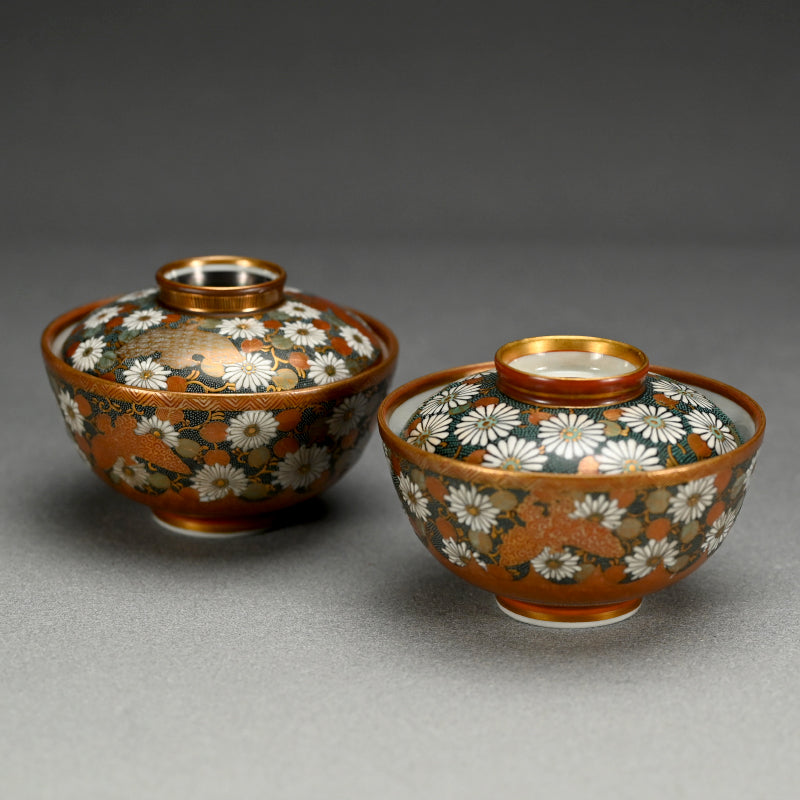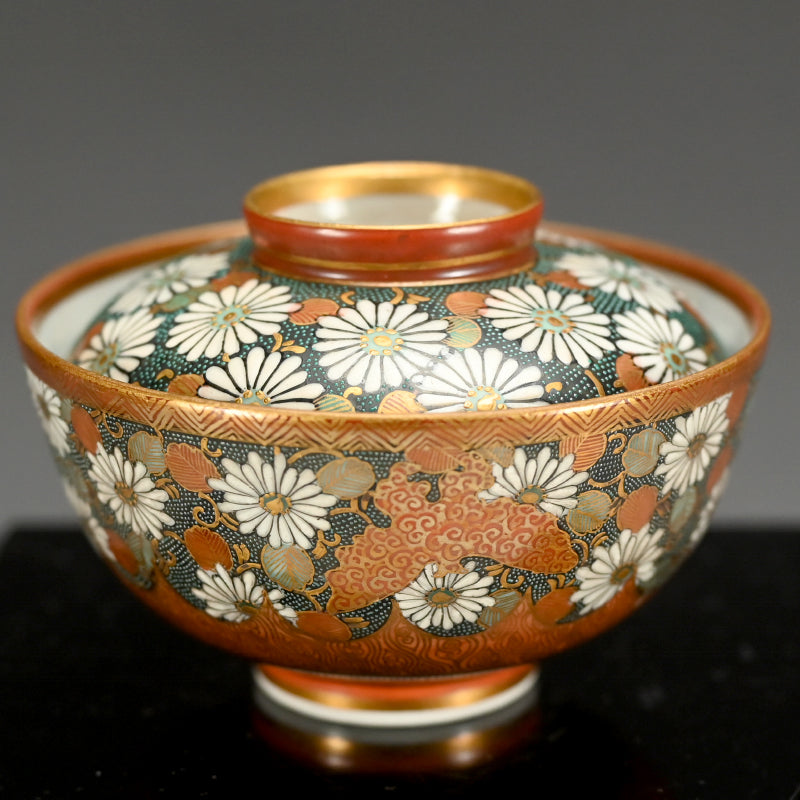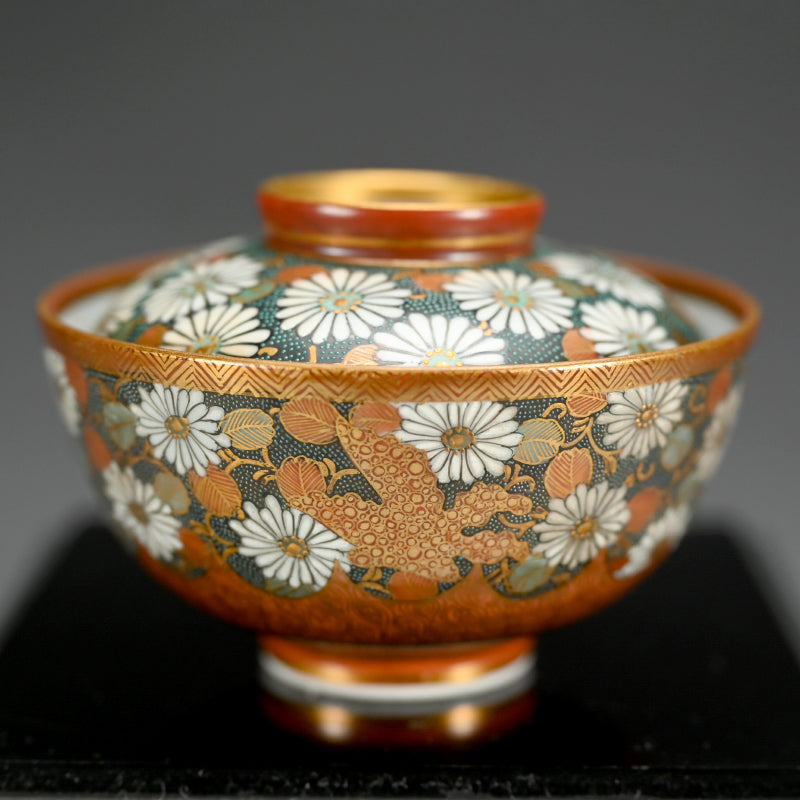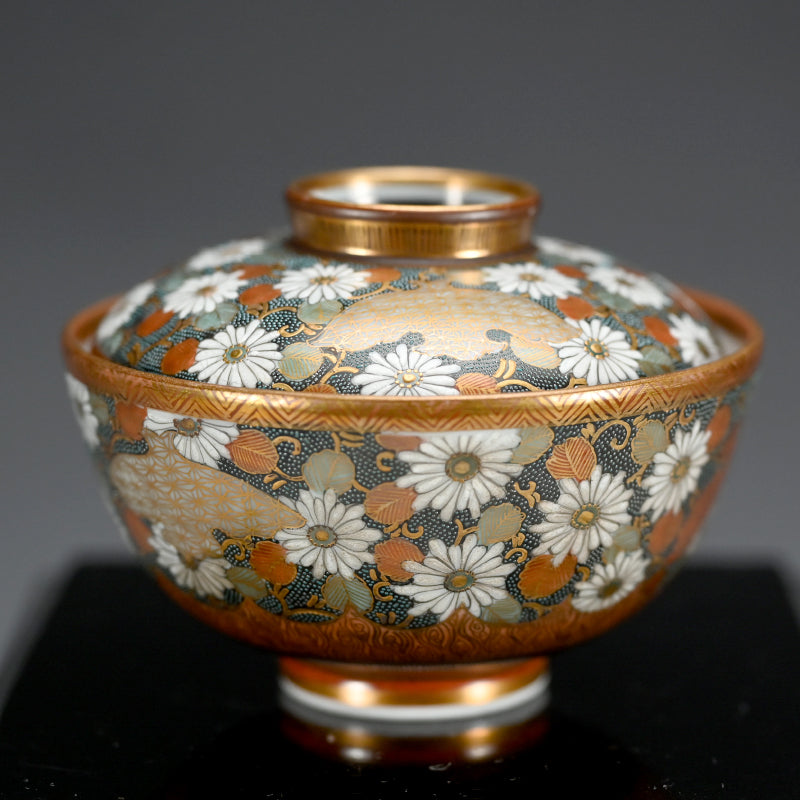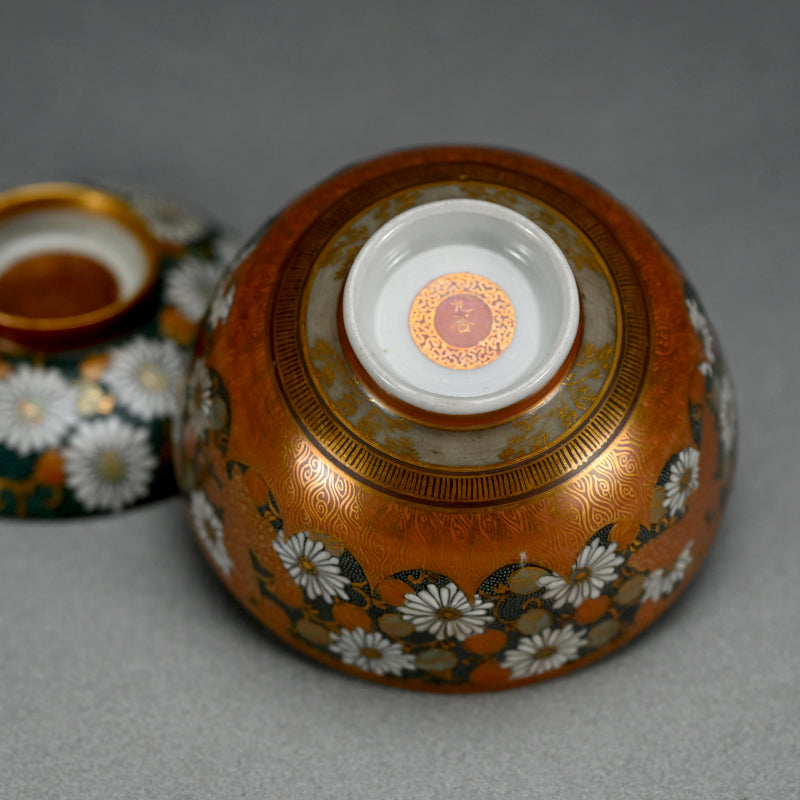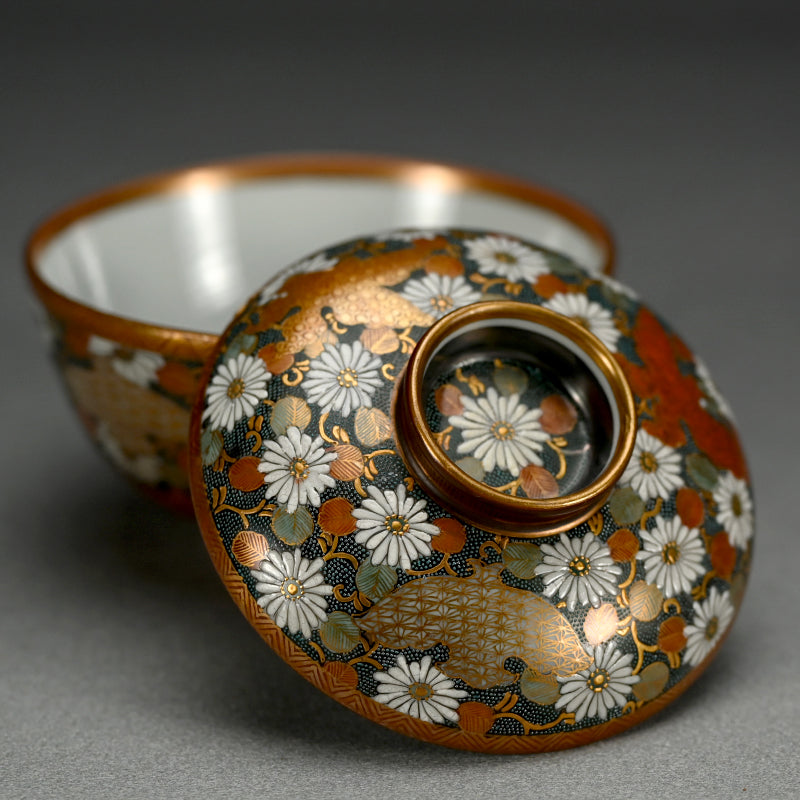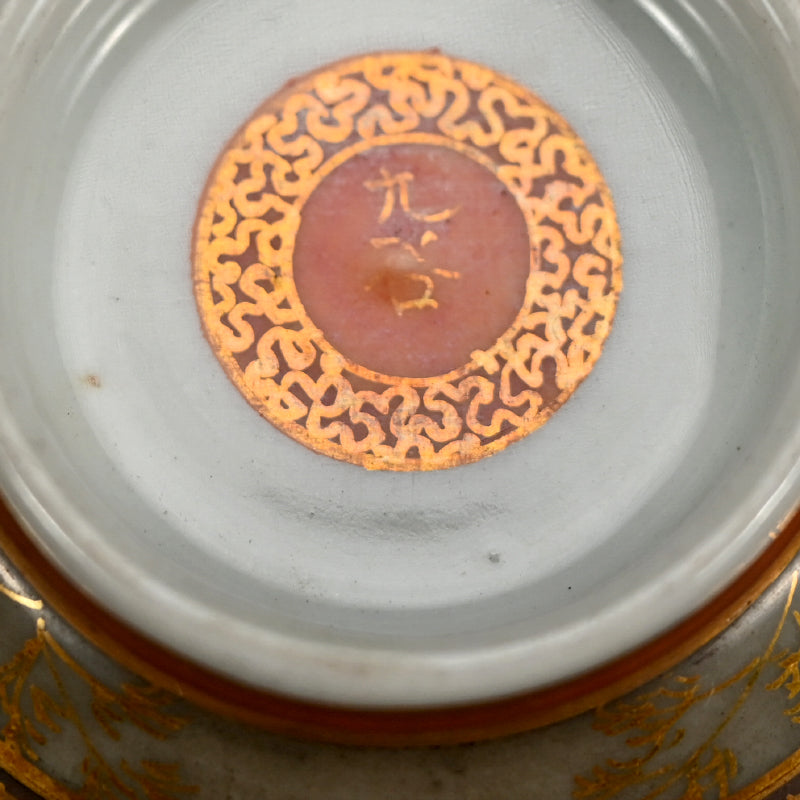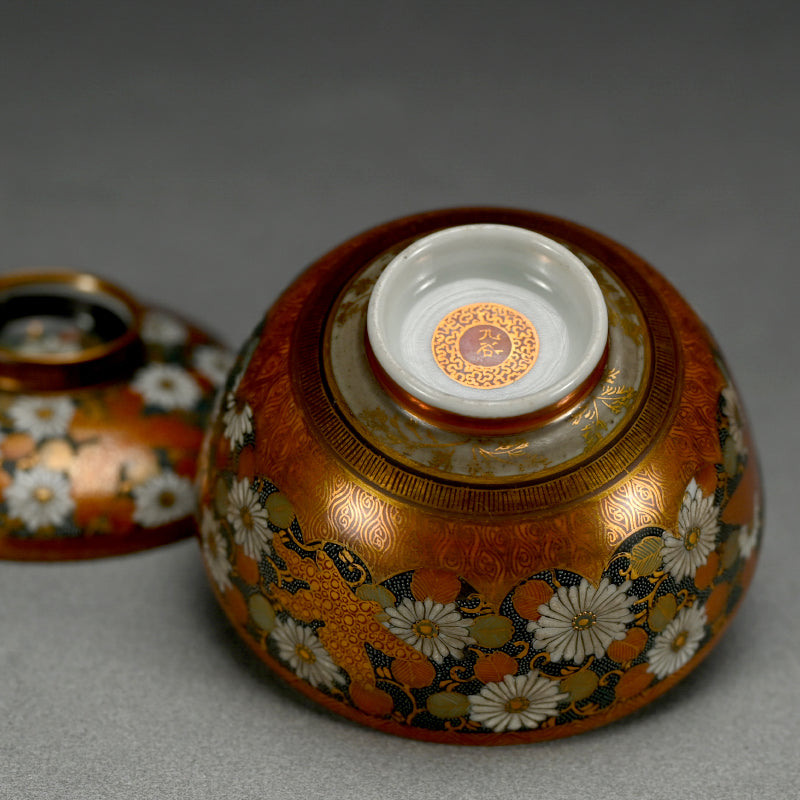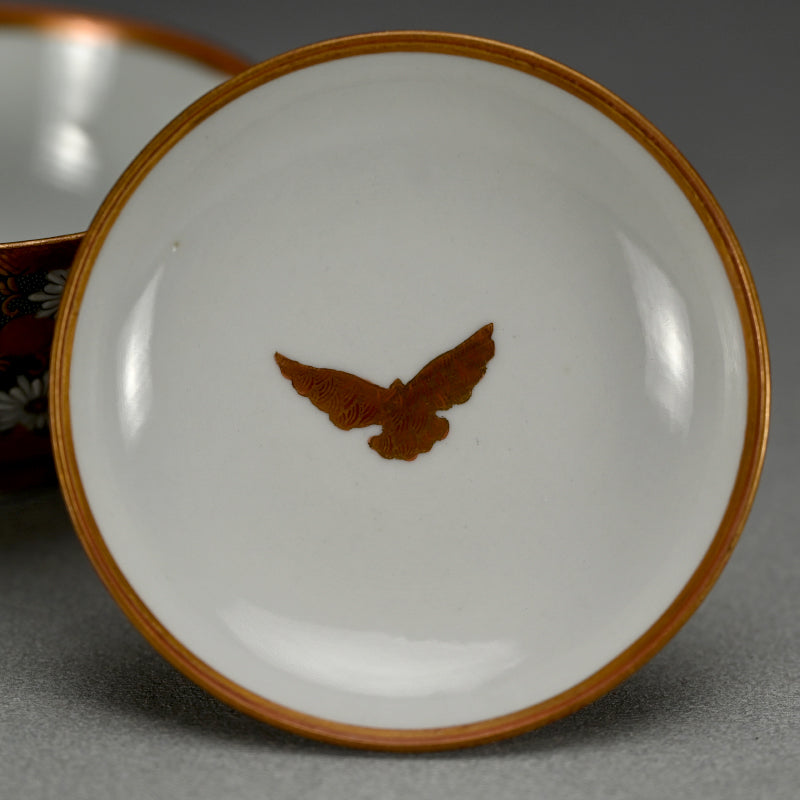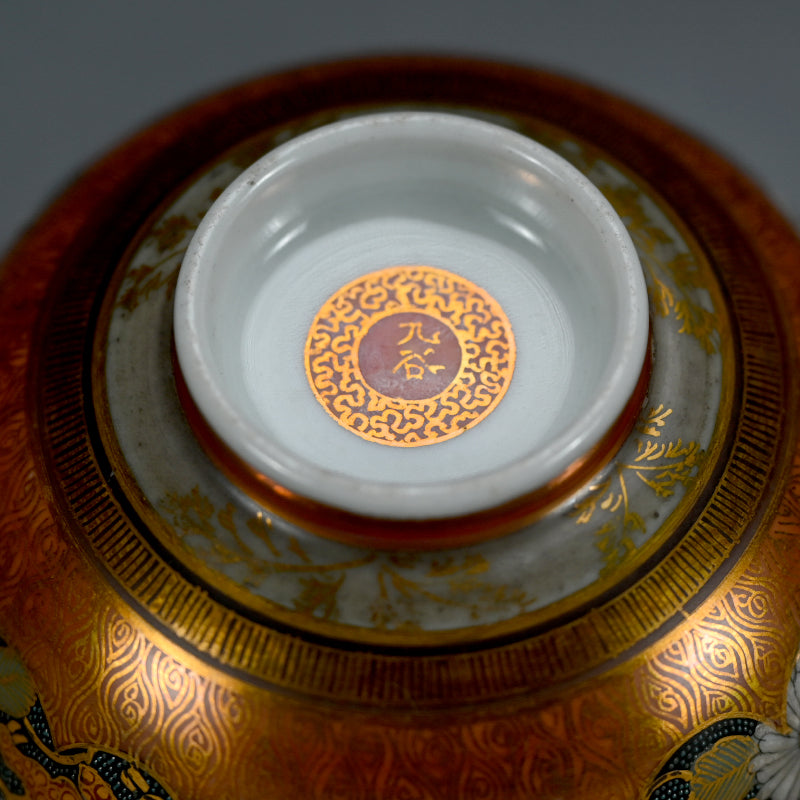1
/
of
13
Exquisite Meiji p. Japanese Kutani Porcelain Bowl Set
Exquisite Meiji p. Japanese Kutani Porcelain Bowl Set
Item Code: K644B
Regular price
¥46,500 JPY
Regular price
Sale price
¥46,500 JPY
Unit price
/
per
Tax included.
Couldn't load pickup availability
A set of two intricately decorated covered porcelain bowls from the Kutani Kilns of Ishikawa prefecture with Moriage designs of chrysanthemums in raised texture and kinrande gold on red. They are signed Kutani inside the foot. Each is 10 (4 inches) diameter 7.5 cm (3 inches) tall and both are in excellent condition.
Kutani ware (Kutani-yaki) originated in 1655 when a local lord, Maeda Toshiharu, sent Goto Saijiro to study ceramic production in the Arita region of Kyushu. Upon his return, Saijiro established a kiln in Kutani village (modern-day Ishikawa Prefecture). The early works, known as Ko-Kutani ("Old Kutani"), were notable for their bold designs, vibrant colors, and overglaze enamels. This period ended mysteriously around 1730 due to financial difficulties or the depletion of local resources. After nearly a century of dormancy, Kutani production was revived in the early 19th century. New kilns were established, and techniques evolved under the influence of Chinese and Arita porcelain styles. This period introduced diverse substyles,
including:
Saiko Kutani: A refined revival of Ko-Kutani designs.
Mokubei Style: Inspired by Chinese Ming and Qing ceramics.
Yoshidaya Style: Known for green, yellow, and blue color palettes.
By the Meiji era (1868–1912), Kutani ware gained international acclaim, partly due to Japan’s participation in world exhibitions. Artists adopted intricate and decorative techniques like Kinrande (gold decoration) and delicate overglaze painting.
Japanese Antiques, Japanese Porcelain, Japanese Pottery, Japanese Ceramics
Kutani ware (Kutani-yaki) originated in 1655 when a local lord, Maeda Toshiharu, sent Goto Saijiro to study ceramic production in the Arita region of Kyushu. Upon his return, Saijiro established a kiln in Kutani village (modern-day Ishikawa Prefecture). The early works, known as Ko-Kutani ("Old Kutani"), were notable for their bold designs, vibrant colors, and overglaze enamels. This period ended mysteriously around 1730 due to financial difficulties or the depletion of local resources. After nearly a century of dormancy, Kutani production was revived in the early 19th century. New kilns were established, and techniques evolved under the influence of Chinese and Arita porcelain styles. This period introduced diverse substyles,
including:
Saiko Kutani: A refined revival of Ko-Kutani designs.
Mokubei Style: Inspired by Chinese Ming and Qing ceramics.
Yoshidaya Style: Known for green, yellow, and blue color palettes.
By the Meiji era (1868–1912), Kutani ware gained international acclaim, partly due to Japan’s participation in world exhibitions. Artists adopted intricate and decorative techniques like Kinrande (gold decoration) and delicate overglaze painting.
Japanese Antiques, Japanese Porcelain, Japanese Pottery, Japanese Ceramics
Share
